Yueqiu Sun
Gamifying Math Education using Object Detection
Apr 13, 2023Abstract:Manipulatives used in the right way help improve mathematical concepts leading to better learning outcomes. In this paper, we present a phygital (physical + digital) curriculum inspired teaching system for kids aged 5-8 to learn geometry using shape tile manipulatives. Combining smaller shapes to form larger ones is an important skill kids learn early on which requires shape tiles to be placed close to each other in the play area. This introduces a challenge of oriented object detection for densely packed objects with arbitrary orientations. Leveraging simulated data for neural network training and light-weight mobile architectures, we enable our system to understand user interactions and provide real-time audiovisual feedback. Experimental results show that our network runs real-time with high precision/recall on consumer devices, thereby providing a consistent and enjoyable learning experience.
From Dark Matter to Galaxies with Convolutional Neural Networks
Oct 17, 2019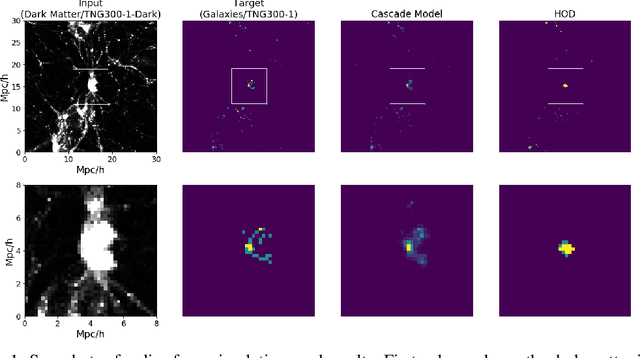
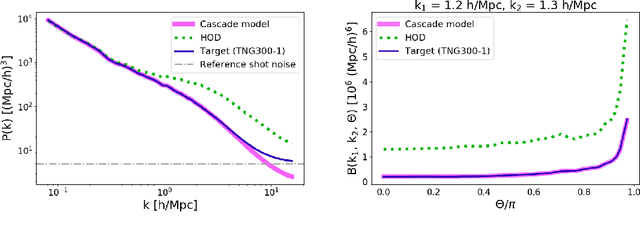
Abstract:Cosmological simulations play an important role in the interpretation of astronomical data, in particular in comparing observed data to our theoretical expectations. However, to compare data with these simulations, the simulations in principle need to include gravity, magneto-hydrodyanmics, radiative transfer, etc. These ideal large-volume simulations (gravo-magneto-hydrodynamical) are incredibly computationally expensive which can cost tens of millions of CPU hours to run. In this paper, we propose a deep learning approach to map from the dark-matter-only simulation (computationally cheaper) to the galaxy distribution (from the much costlier cosmological simulation). The main challenge of this task is the high sparsity in the target galaxy distribution: space is mainly empty. We propose a cascade architecture composed of a classification filter followed by a regression procedure. We show that our result outperforms a state-of-the-art model used in the astronomical community, and provides a good trade-off between computational cost and prediction accuracy.
From Dark Matter to Galaxies with Convolutional Networks
Apr 01, 2019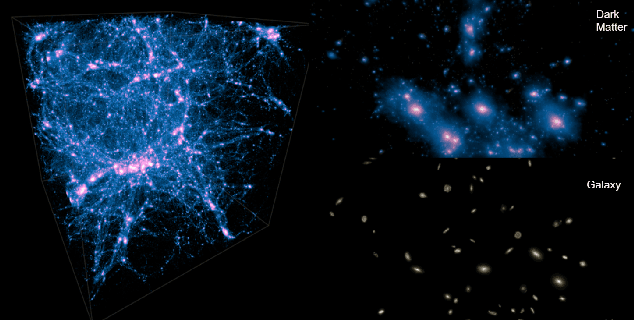
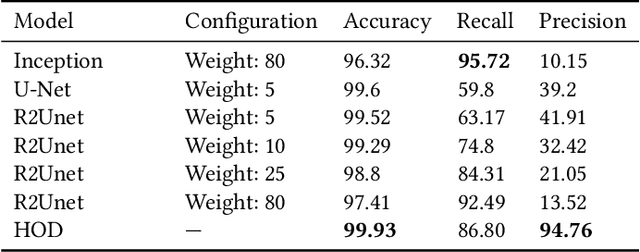
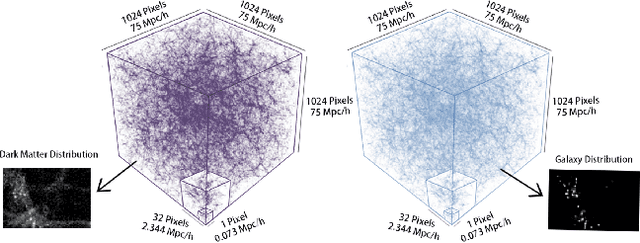
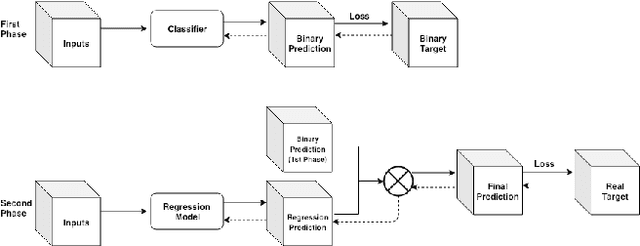
Abstract:Cosmological surveys aim at answering fundamental questions about our Universe, including the nature of dark matter or the reason of unexpected accelerated expansion of the Universe. In order to answer these questions, two important ingredients are needed: 1) data from observations and 2) a theoretical model that allows fast comparison between observation and theory. Most of the cosmological surveys observe galaxies, which are very difficult to model theoretically due to the complicated physics involved in their formation and evolution; modeling realistic galaxies over cosmological volumes requires running computationally expensive hydrodynamic simulations that can cost millions of CPU hours. In this paper, we propose to use deep learning to establish a mapping between the 3D galaxy distribution in hydrodynamic simulations and its underlying dark matter distribution. One of the major challenges in this pursuit is the very high sparsity in the predicted galaxy distribution. To this end, we develop a two-phase convolutional neural network architecture to generate fast galaxy catalogues, and compare our results against a standard cosmological technique. We find that our proposed approach either outperforms or is competitive with traditional cosmological techniques. Compared to the common methods used in cosmology, our approach also provides a nice trade-off between time-consumption (comparable to fastest benchmark in the literature) and the quality and accuracy of the predicted simulation. In combination with current and upcoming data from cosmological observations, our method has the potential to answer fundamental questions about our Universe with the highest accuracy.
 Add to Chrome
Add to Chrome Add to Firefox
Add to Firefox Add to Edge
Add to Edge